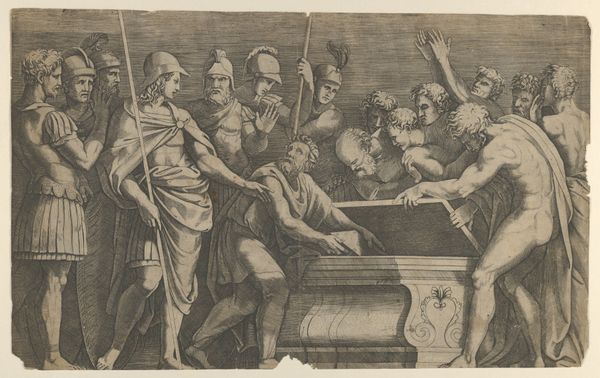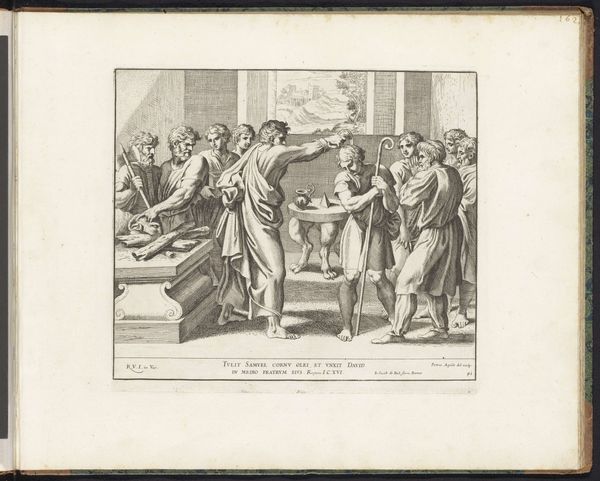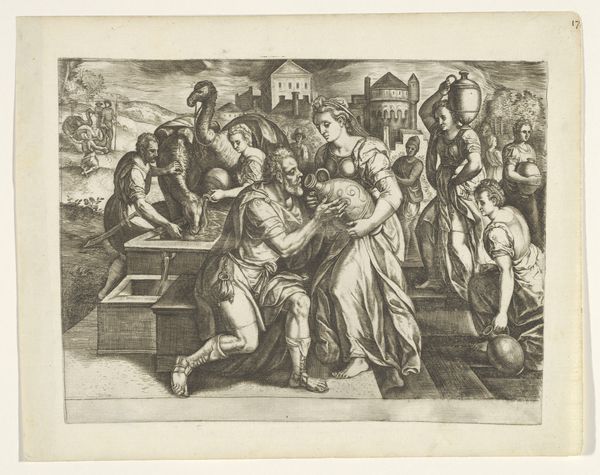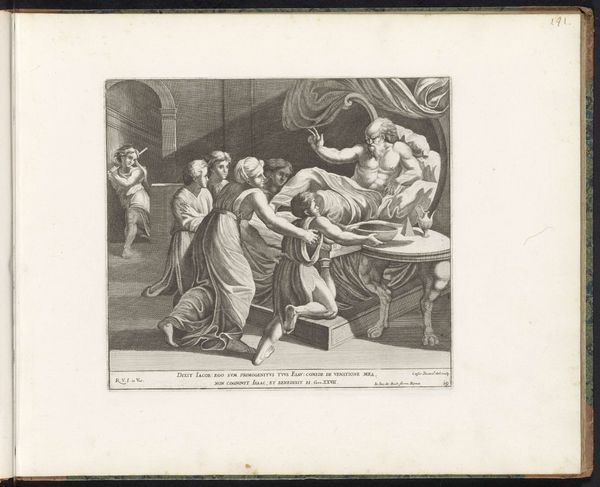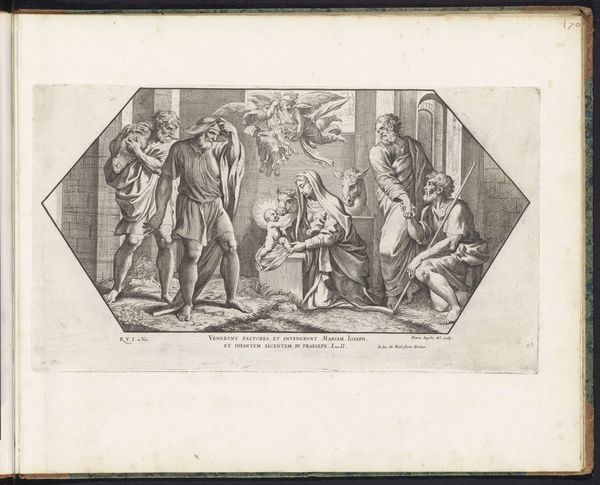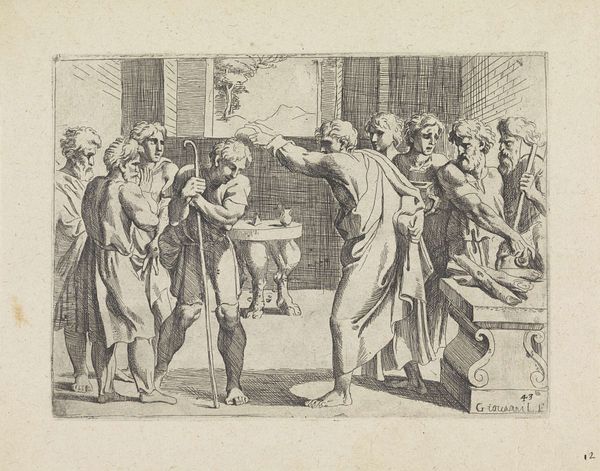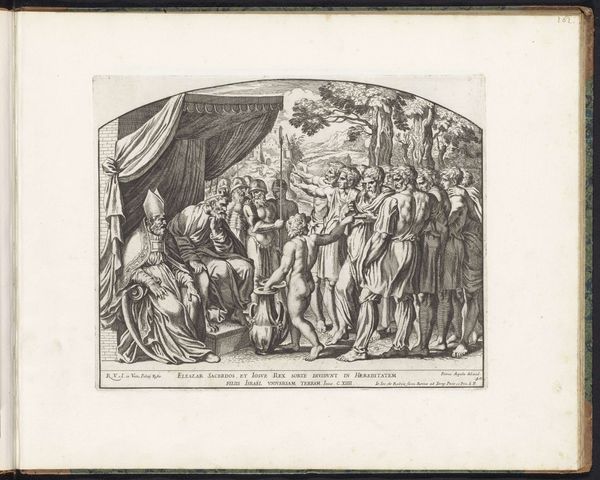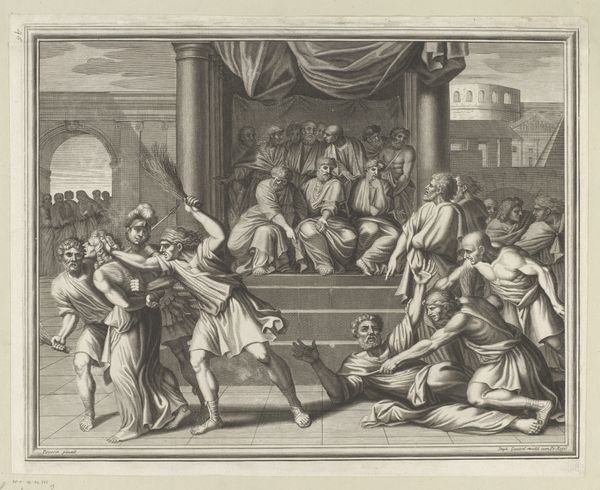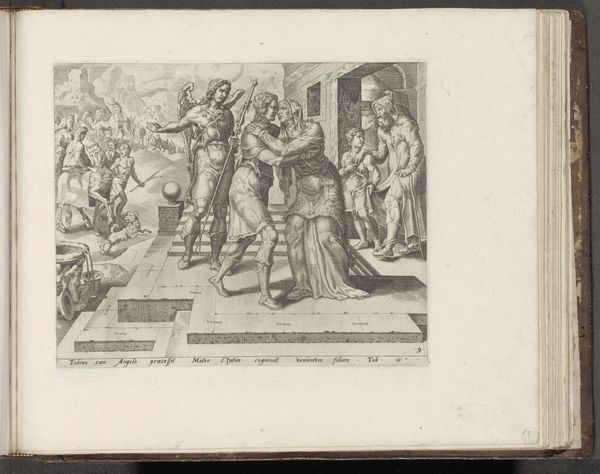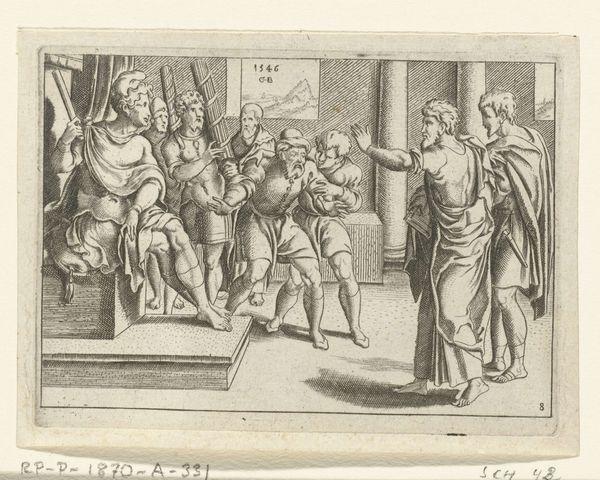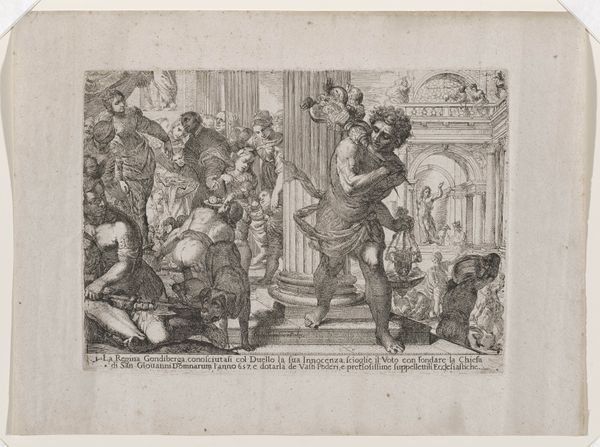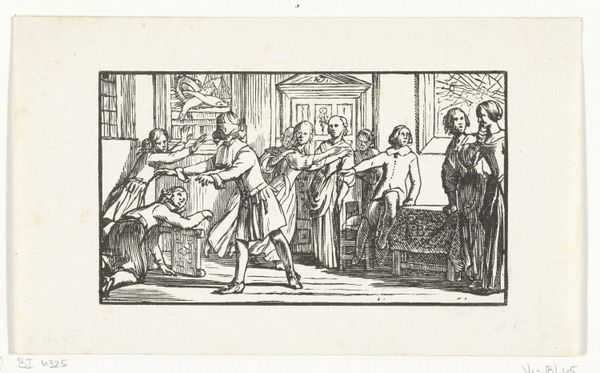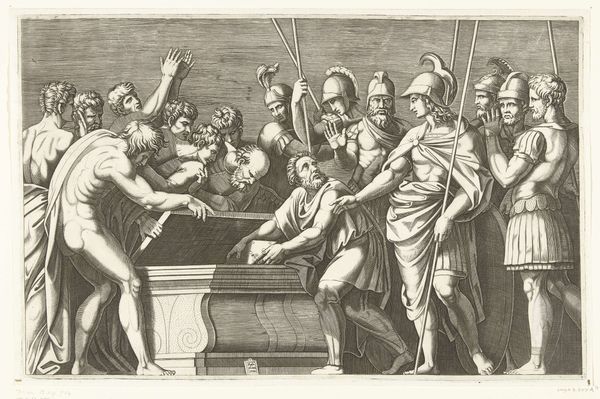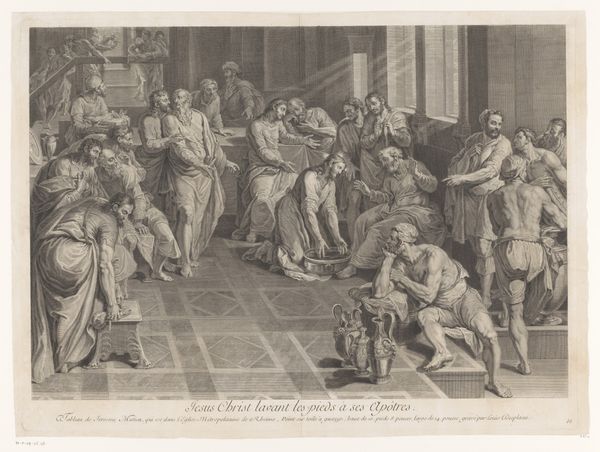
Alexander de Grote laat de werken van Homerus veilig opbergen 1515 - 1570
0:00
0:00
print, engraving
#
narrative-art
# print
#
old engraving style
#
figuration
#
line
#
history-painting
#
italian-renaissance
#
engraving
Dimensions: height 251 mm, width 407 mm
Copyright: Rijks Museum: Open Domain
Curator: Here we have a print dating back to the Italian Renaissance, sometime between 1515 and 1570. It is an engraving titled "Alexander de Grote laat de werken van Homerus veilig opbergen"—"Alexander the Great Orders the Works of Homer to Be Safely Stored." Editor: Gosh, it feels… bureaucratic. I mean, look at the serious faces. You'd think they were sealing away state secrets, not poems! And the light and shadow are so intense, creating a claustrophobic, serious mood, although, the action, whatever is being protected, remains somehow obscured. Curator: Indeed. Observe the line work, which is quite deliberate. The engraver uses varied hatching to delineate forms and suggest depth within a predominantly linear style. Note how the figures are rendered with attention to anatomical detail. We can see the influence of classical ideals, both in the subject matter and in the artistic execution. Editor: You're right about that anatomical detail! Everyone's so buff; must've been hitting the ancient gym. But the lines, yeah, they're rigid, like they’re trying too hard. Is that some kind of artistic tension with all that muscle, though, to show the importance of what’s inside the chest? Curator: Perhaps. The composition leads the eye from the group of soldiers on the left, led by Alexander, towards the chest at the right, a carefully balanced grouping. Note the gestures; the raised hand indicates the importance of what is being stored, which can be interpreted on two levels: material, as a sign of great conqueror's spoils, or immaterial as cultural heritage. Editor: And look, even in this tiny print, there's such a hierarchy! Alexander coolly directing traffic and these folks practically throwing themselves over to safeguard whatever treasure they have there. It all adds up to some interesting theater. The chest is now some strange focal point because it is an emblem of intellectual curiosity? What does it represent now to museum visitors? Curator: What this piece represents can certainly change over time! One can continue to question whether these careful preservation methods really matter today as ways of retaining stories about ancient intellectual achievements. The engraving's style may be of another time, but such questions about meaning remain as current now as back then. Editor: Precisely! Thanks for unraveling some of this, I know next time, if something looks important I’ll make it to see why!
Comments
No comments
Be the first to comment and join the conversation on the ultimate creative platform.
